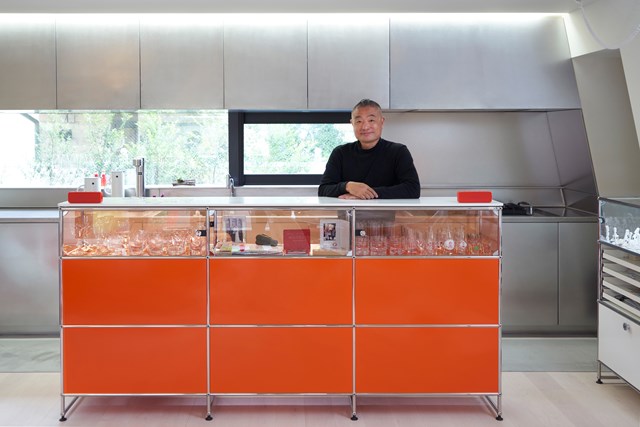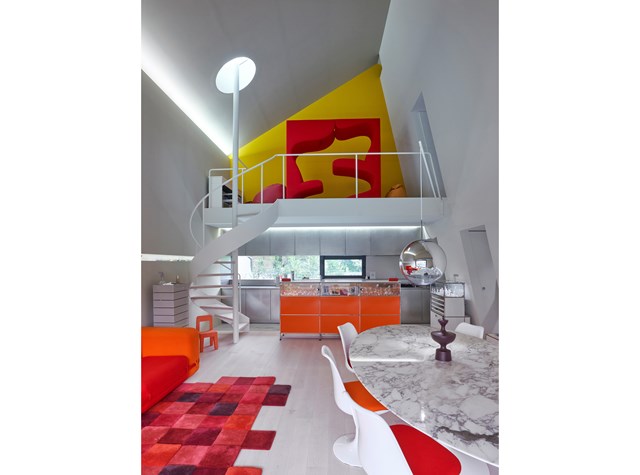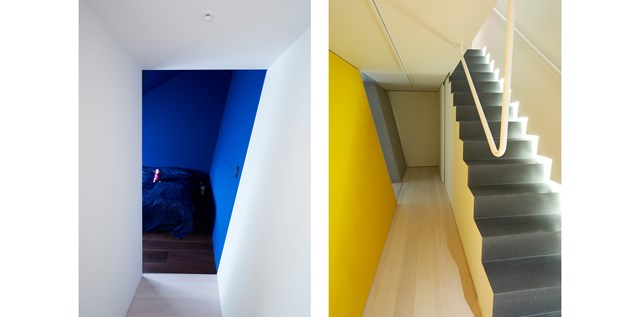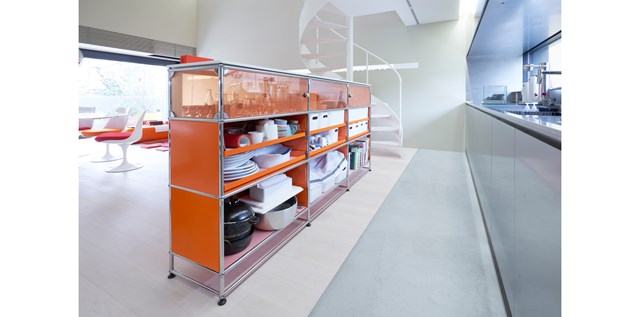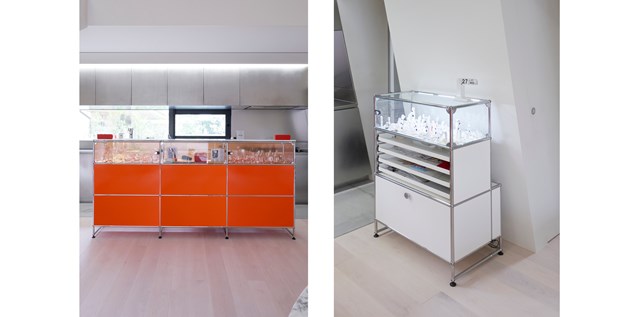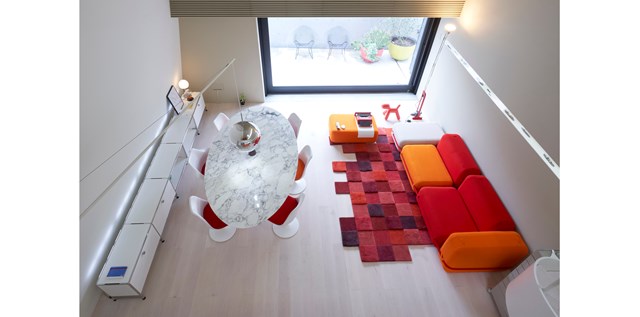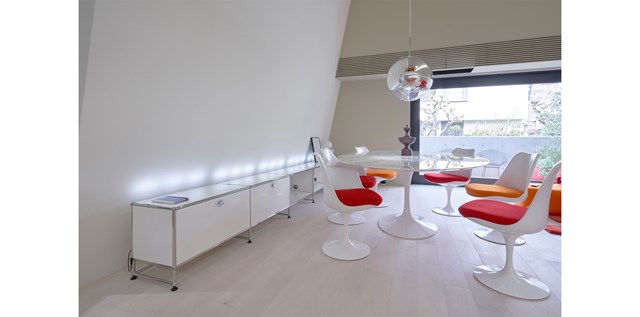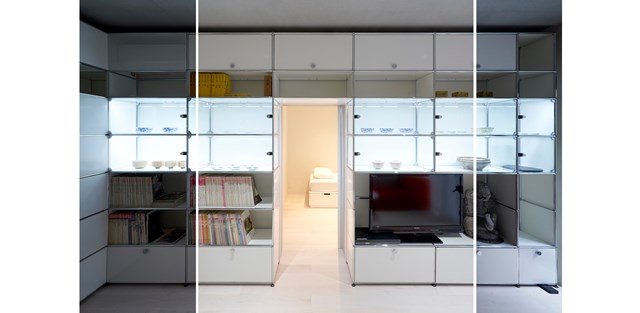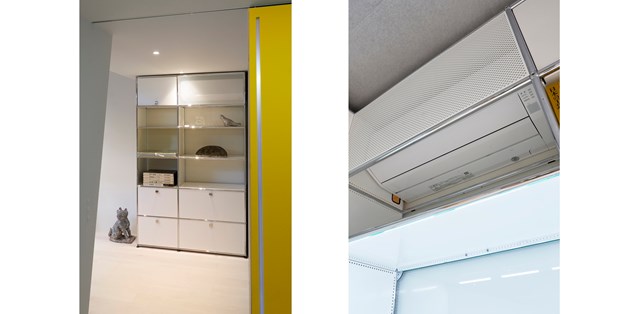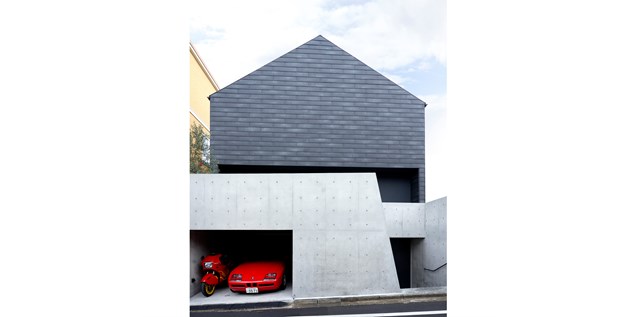The second floor furniture layout can be seen well from the third floor up the spiral staircase. On the right side is the modular sofa “Miffy” designed by Mr. Terada for this house. The dining table and chairs are Eero Saarinen’s 1950s Pedestal Collection, and the chairs known as Tulip Chairs are especially famous. Furthermore, alongside the left wall, is a white USM Haller sideboard. The wall behind the white USM Haller is significantly tilted, which is a major feature of this house.
“This building is a two-family house where my family lives on the second and third floor and my parents plan to live on the first floor. Our daily lives are separate, but living under one roof, I wanted the whole house to cohesive. So, I created a “mechanism” to create a slanted wall from the first floor, up to the roof top. Then, a mysterious perspective was created on the inside, which in turn created many new details to consider. I really enjoyed the unexpected challenges as an architect. The dead space created by the tilted wall is one of them. So I decided to place a USM Haller sideboard raised by 10cm off the floor, along the tilted wall and used Haller E lighting in the frame to illuminate the wall.”


